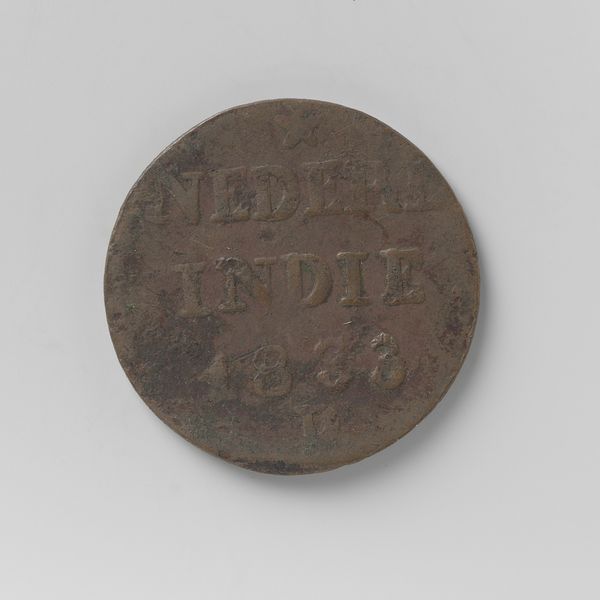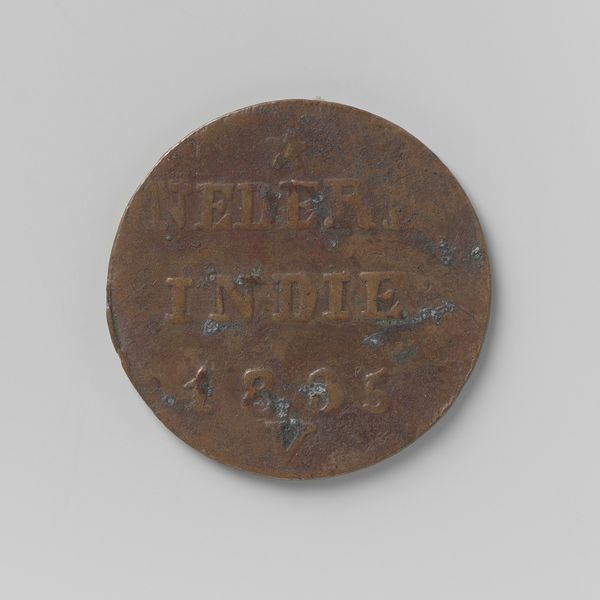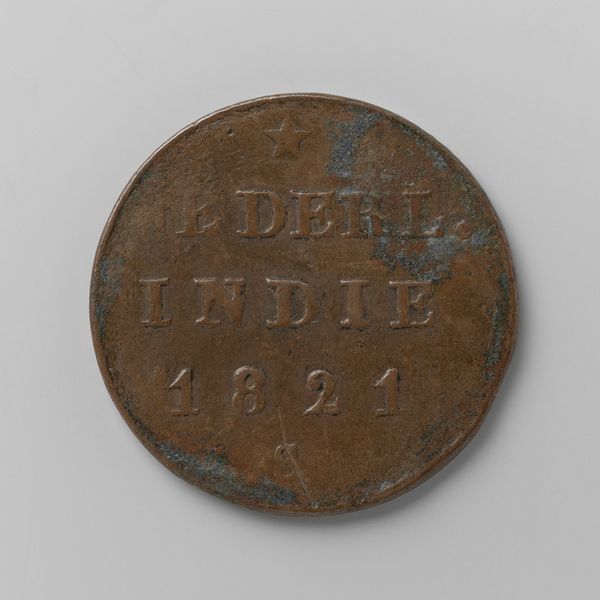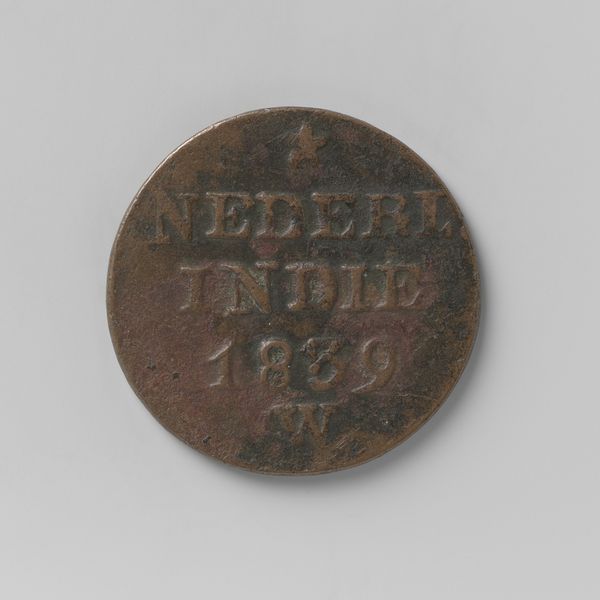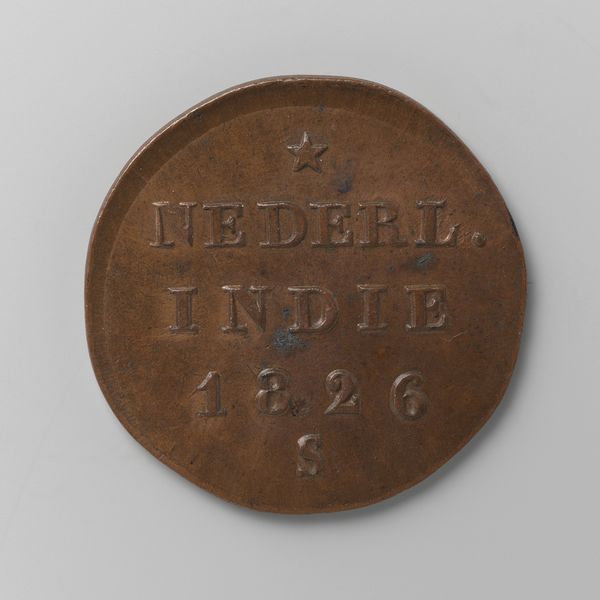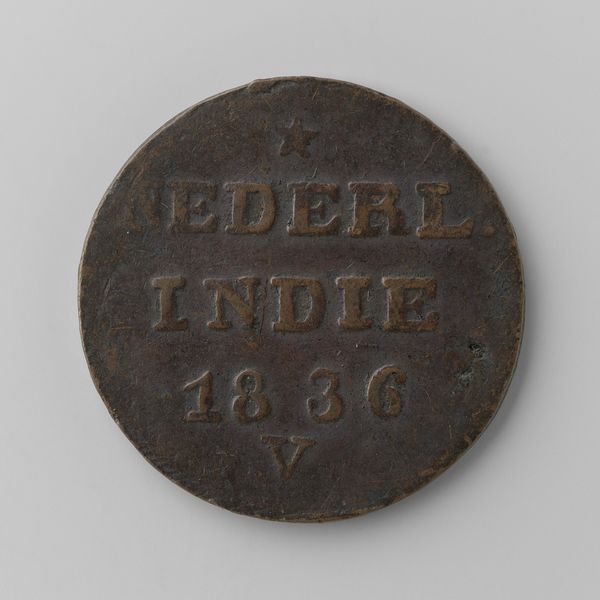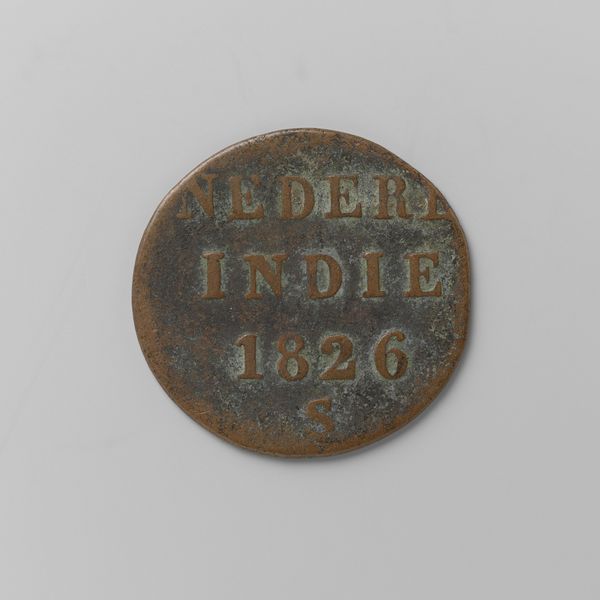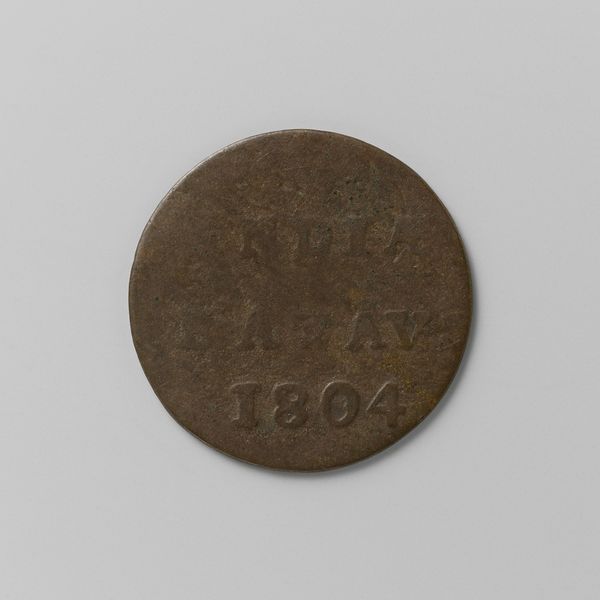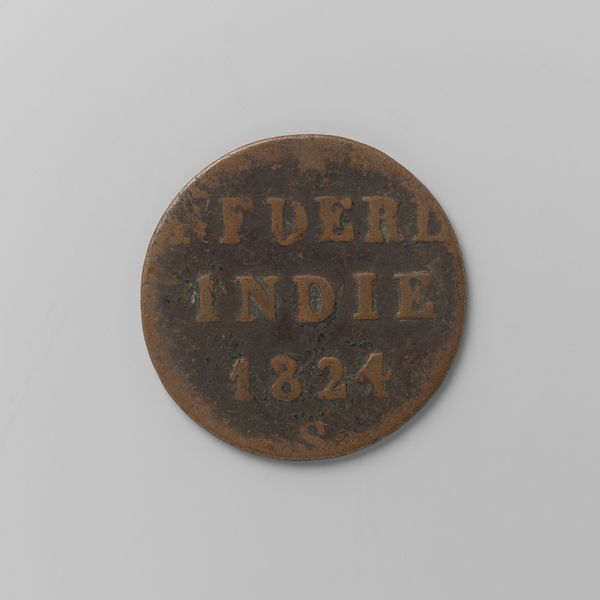
print, metal, bronze
#
still-life-photography
#
dutch-golden-age
# print
#
metal
#
asian-art
#
bronze
#
modernism
Dimensions: diameter 2.1 cm, weight 2.95 gr
Copyright: Rijks Museum: Open Domain
Editor: We're looking at a bronze coin, a 1/4 stuiver from Nederlands Indie, dated 1836. It seems small and insignificant, but it's surprisingly powerful, I find its wear marks quite striking. How do you interpret this seemingly simple object? Curator: This coin is far from simple; it’s a potent symbol of Dutch colonial power. We have to see it within the historical context of exploitation and resource extraction in the Dutch East Indies. Each stuiver represents the labor and resources that were forcibly taken. Consider the weight of that history impressed upon this small bronze disc. Editor: So, you see it as a symbol of oppression? The average person at the time, though, would've just seen it as money. Curator: Precisely, and that's the insidious nature of it. It was normalized, an everyday object masking deep structural inequalities. The Dutch profited immensely, while the people of the Indies suffered. What does the "Nederl. Indie" inscription evoke for you, knowing that history? Editor: It’s almost like a brand stamped on the land and people, isn't it? Like claiming ownership. Curator: Exactly! The star at the top—what could that signify? Perhaps aspirations, guiding principles. But whose aspirations were prioritized here? Whose star was followed? And by whom at whose great expense? Editor: It reframes my whole view of the coin. I hadn't thought about the loaded history it carries. Curator: These seemingly mundane objects can be powerful tools for understanding our past, so long as we are willing to explore and analyze their broader historical implications through a post-colonial lens. Editor: Definitely something to consider next time I find some change on the ground!
Comments
No comments
Be the first to comment and join the conversation on the ultimate creative platform.
